|

     
| My kind of rock and roll tour requires
throbbing guitars and a heavy backbeat. It also involves driving the
hills of South Dakota - a region of spectacular, rugged scenery (the
rock) and free-flowing, panoramic highways ( the roll). The Black Hills
region of South Dakota is a sunny smorgasbord of pine and aspen covered
hills, cattle-grazing grasslands, and mountains with more wildlife than
an Old West saloon (some of the latter survive in Dakota towns today).
The main gateway to the Black Hills is Rapid City which, despite a
population of 60 thousand, retains an easygoing Western flavor.
Home of Ellsworth Air Force Base, and a raft of high-tech
companies, it's a quaint, sprawling city that still has much of the
feeling of its sleepy, small town past.
The Native American presence here goes back to the Sioux Indians,
who settled in the area at least two millennia ago.
|
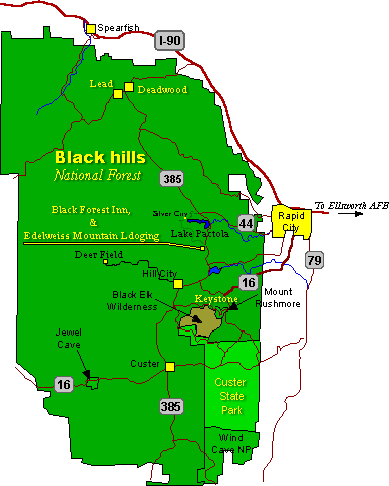 |
West on Route 44 out of Rapid City takes you
up into the Hills.
This
area is about un-dudey as it gets, cattle ranches and horses dot the
landscape. South Dakota is a mecca for the serious horse rider, the
fly-fishing fanatic, the big game hunters, or anyone who just wants to
forget about routines for a week. Merely taking a hike in the Hills is
therapy enough.
Acres of
sagebrush plains, grassy meadows, and rocky gorges are surrounded by the
pristine wilderness of the Black Hills National Forest.
High-tension
wires are scarce, cell phone reception breaks up, locals carry
saddlebags instead of briefcases. You
have entered the low-tech zone.
|
| South on Highway 385 takes you into Custer
State Park, which is a treasured resource that South Dakotans are proud
to be able to share with visitors from far and wide.
The Buffalo rut in
Custer Park is an awesome event. It's
loud, it's fast paced and it's brutal.
Most of the parks visitors want to see the buffalo herd.
The herd shares the park's 17,800 acre rangeland with numerous
other wildlife: elk, whitetail deer, mule deer, pronghorn, mountain
goat, bighorn sheep, coyote, prairie dogs, birds and big cats.
|
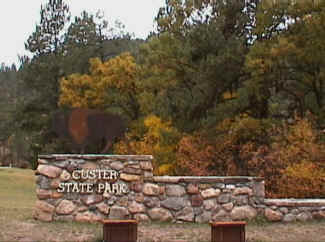
|
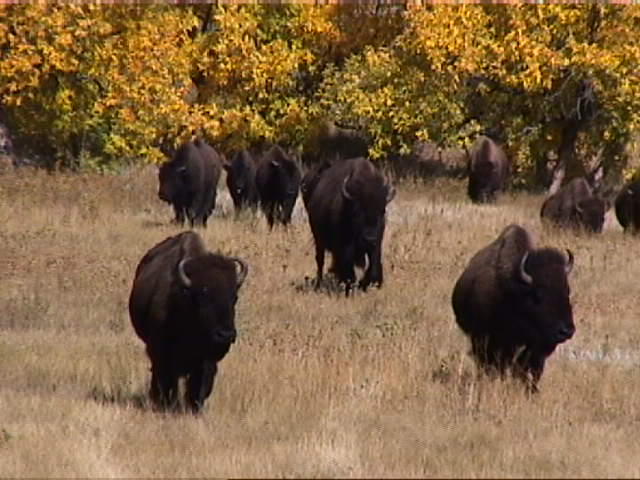 |
The bison herd is the park's dominant grazer.
Bison can run up to 30 mph and weigh up to 2000 pounds.
The park keeps the herd in balance with the grassland's
ability to support it and the other wildlife that inhabit the park's
rangelands.
In a typical
year, the park will winter between 950 and 1000 head of bison, depending
on rainfall.
|
| There are three sales of the herd's surplus animals each
year. The revenue's from
the sale help support the day to day operation of the park.
Bison have recovered from the brink of extinction in the late
1800's to nearly 250,000 today. The
park removes animals from the herd when they are 10 years old. The females are sold at auction, and the bulls are hunted.
Ten bull permits are drawn each year and the hunt is conducted in
December. Guided hunts are
scheduled one at a time. |
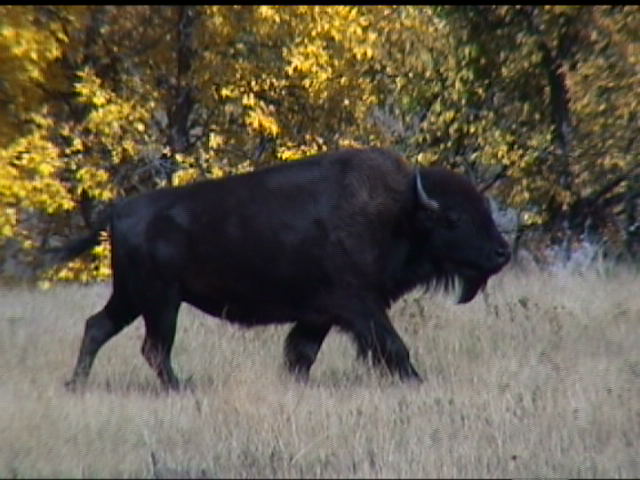 |
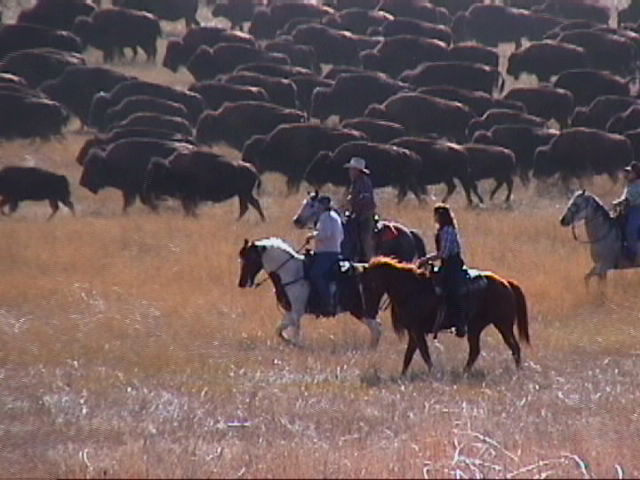 |
Each fall the wild west returns to Custer State Park
during the annual Buffalo roundup.
Park staff, cowboys, and cowgirls saddle up to move the park's
1500 bison to the buffalo corrals. Once
in the corrals, the animals are sorted by the parks staff.
Most of the bison are released back into the park, while others
remain in the corrals until an auction that is held during the third
weekend in November. Bison
are tested for tuberculosis and blue balls.
All calves are branded. |
| Ten miles east from the Park visitor center east on route
16a will take you to Iron Mountain road.
This winding road runs between Mount Rushmore and Custer State
Park, it is a must-see route. Along
the highway are wildfire exhibits, pigtail bridges, pulloffs with
magnificent Black Hills scenery and tunnels framing Mount Rushmore. Also
along this route are the famous begging burros. |
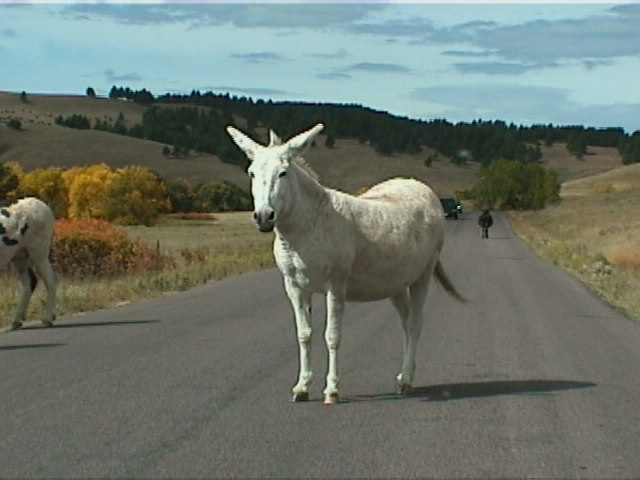
|
| America's two largest stone carvings are a mere seventeen
miles apart, spitting distance when you consider the scale on which
they're conceived. The
better known Mount Rushmore National Memorial, is the lynchpin of the
Hills' tourist circuit. Only
New York City's Statue of Liberty rivals Mount Rushmore as a globally
recognized symbol of American aspirations and ideals.
Each head is about sixty feet from chin to crown.
Lincoln has an eighteen foot long nose. |
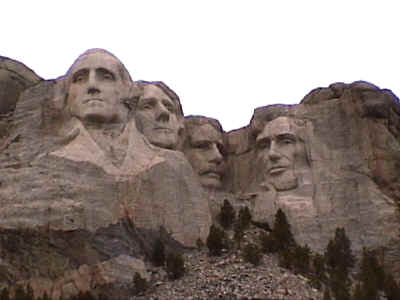 |
| In 1939, prompted by the sight of the Rushmore monument
nearing completion, Sioux leader Henry Standing Bear wrote to Korczak
Ziolkowski a New York sculpture proclaiming "that Indians would
like the white man to know that the red man has great heroes, too".
The chief invited him to take on a similar project.
Less than
a decade later, pushing forty ,the Boston born orphan moved to the
Black Hills to undertake a vastly more ambitious scheme than Mount Rushmore -
Crazy Horse Mountain.
The
subject, the revered warrior Crazy Horse on horseback.
Ziolkowski died in 1982, today his widow and most of their ten children
continue to realize his vision. The
90 foot high face was completed in time for the fiftieth anniversary
celebration in 1998. It
could well be another fifty years before the project is finished.
|

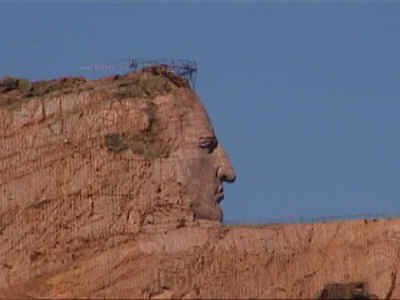
|
| The temperatures had dropped into the low
20's for our last day of vacation, and it had snowed a few inches on the
mountains over night. We drove to the small western town of Custer
to pick up one of the 14 trailheads for the George S. Mickelson
Trail.
This was South Dakota's first "rails to trails" project and
was supported by Governor George S. Mickelson. The trail was
started in 1991 and completed in the fall of 1998. Governor
Mickelson had died in 1993 and the trail was named in his honor.
The trail winds through the Black Hills for over 114 miles of
beautiful landscapes from Deadwood to Edgemont. Trail surfacing is
primarily crushed limestone and gravel with gentle slopes.
We hiked through snow covered pine forests and the aspen trees were
all pretty shades of bright gold. We crossed over converted
railroad bridges and passed by cattle and horses grazing in the
pastures.
We could see the snow covered mountains and Harney Peak, which is the
highest point of elevation in South Dakota at 7,232 feet. We were
planning to hike up Harney Peak, but the snow changed our plans and we
stayed at the lower elevations.
There were lots of deer crossing over the trail in front of us.
There is no hunting on the trail so they were not afraid of
people.
We turned back after two hours of hiking when we reached the
trailhead near Crazy Horse Mountain. All the trailheads offer
parking, vault toilets and a table.
It became quite cold and windy on the two hour return hike, but we
were prepared with gloves, hats and several layers of
clothing.
It was a good adventure and we enjoyed hiking on a trail through
such peaceful and photographic surroundings. We would want
to hike on this trail again when we return to South Dakota someday.
|
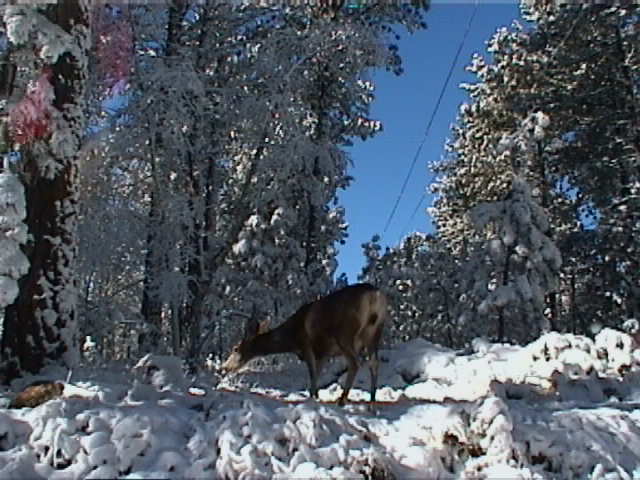

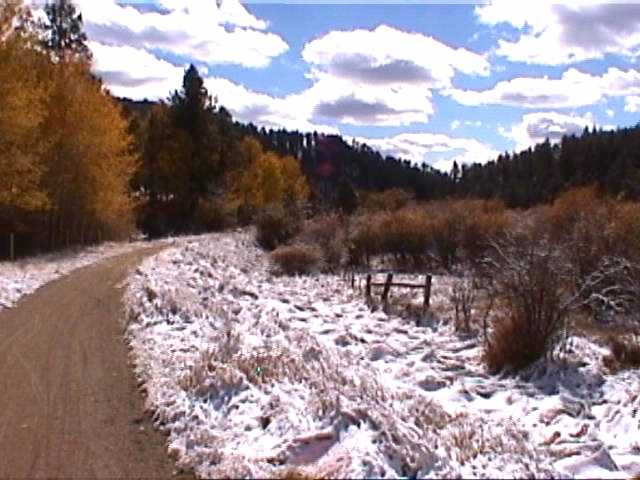
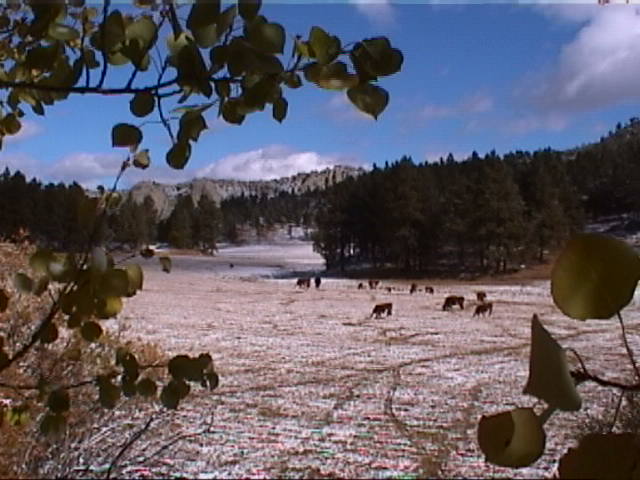
|
BACK TO THE TOP
     
|